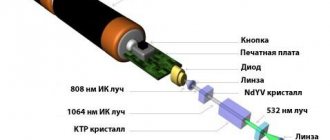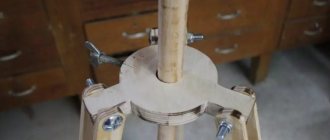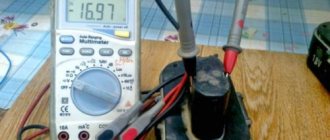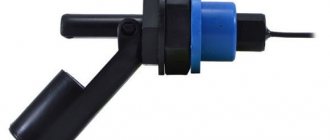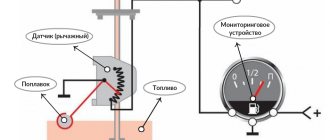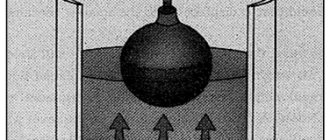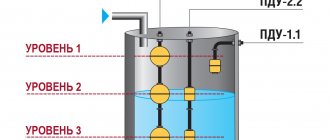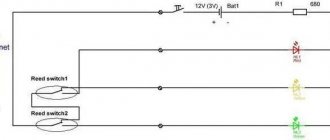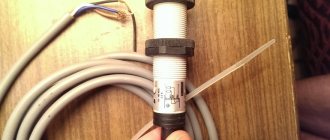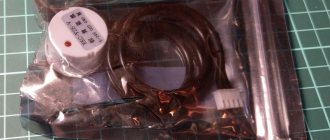The level is one of the most used optical measuring instruments in the geodetic, manufacturing and construction industries. With their help, height differences between different points on earth surfaces or engineering structures are determined. For correct altitude measurements, it is important to have a working optical level. And therefore it is necessary to carry out periodic checks of these instruments.
During manufacture, optical levels must be checked at the manufacturing plants and notes about this are made in the device passport. This does not mean at all that level checks are not needed. On the contrary, if I may say so, for confidence in your partner, it is recommended to have the device checked by a metrological service. After this, surveyors will have to verify this themselves by personally performing the main verifications before using it.
Round level checks
In levels, and other geodetic instruments, field measurements are made, as a rule, relative to certain reference points. These can be considered plumb lines. So, the vertical level of the levels is controlled by a round level, or rather its air bubble, which must be in the center of the ampoule. Usually the body of the level is set in a position in which it will be located along two lifting screws. By rotating them, the bubble is placed in the middle of the round level ampoule in the direction of the third lifting screw. Then, using this screw, the vial is brought out to the center of the ampoule, periodically correcting its position with two other screws. This procedure is repeated until the bubble is established in a central position inside the level ampoule.
To check that the bubble will be in the center, turn the body of the level 180 degrees. The bubble will probably move off center and deviate beyond the circle line it should not move beyond. Then you need to visually determine the distance the bubble is displaced from the center. And remove half of its value by rotating the lifting screws. At the same time, depending on the direction of its displacement, choose which lifting screw to do this with. The second half of the bubble deflection value is corrected with adjusting screws. Then the verification is repeated until the bubble is in the center of the level.
Features of adjustment
First verification of the level.
When checking, you must ensure that the axis of the circular level is parallel to the axis of rotation of the tool. The bubble on the round level must be brought to the central point of the circle, lifting screws must be used, the upper part of the tool must be rotated around its axis by 180°. If the condition is met that the bubble is in the center, the work can be considered completed.
Otherwise, the correction screws will allow you to move the bubble to the central part by half the deviation, while the screws will help bring it to the starting point “0”. In order to verify the correctness of the work, the verification must be repeated and the results verified. Before carrying out another verification, it is necessary to bring the instrument axis to a vertical position in advance.
When checking the level, you must ensure that the horizontal thread of the mesh is located at an angle of 90° relative to the axis of rotation. The middle thread needs to be aimed at a clearly visible mark, which is located 25-30 m from the tool, and then, using the guide screw, carefully begin to rotate the pipe. The thread should not extend beyond the selected mark. This condition is guaranteed by the manufacturer. If the level does not meet this condition, then the screws that hold the mesh and the pipe body will have to be loosened, then the mesh can be installed in the required position.
Level adjustment scheme: A – initial, called back, point B – determined, called front. One level installation is called a station. H – point elevation, h – elevation.
When adjusting the level, it is necessary to make sure that the axis of the cylindrical level is parallel to the sighting axis of the pipe. This condition can be analyzed by using double leveling of the line at both ends. The line, whose length is 50 m, must be secured with stakes. The process of checking and adjusting the level in this case involves installing the instrument at the prepared point A, while the eyepiece should be placed above the peg, the axis of rotation must be brought to a vertical position, using a round level, this will allow you to determine the height of the instrument (i1).
At point B you need to install a rod in order to make a reading b1 on it; in advance, using an elevator screw, you need to set the bubble of the cylindrical level to the initial o, this indicates the need to pair its two halves. If the sighting axis and the cylindrical level axis are located in a position that differs from the parallel to each other of the named elements, an x error will be obtained when reading b1. If this value does not exceed 4 mm, then the verification will not involve further adjustment.
Checking the mesh of threads
Consists of checking the geometric conditions of part of the optical system of the level. Its essence is that the condition of parallelism of the vertical grid, the axis of rotation of the level body and the plumb line is observed.
For all types of levels such verifications are carried out as follows. At a distance of about twenty-five meters from the level, a weighted cord plumb line is suspended. The device itself is naturally in working condition after the previous verification. The telescope of the level must be pointed towards the plumb line. Using the leveling screw, the vertical thread is precisely focused and aligned with the plumb line. Along the entire length of the lens it should coincide with the plumb line. If the thread grid is displaced by more than 0.5 millimeters, its position must be adjusted. The correction is made after unfastening the reticle screws located under the unscrewing cap in the area of the eyepiece part of the level. The top screws are loosened approximately one full turn, and any of the horizontal screws are loosened by half or three quarters of a turn of the screw. After which, the entire frame of the mesh of threads is carefully rotated in the direction of verticality, which is visually checked through the eyepiece. The fastening screws are tightened in the reverse order, and the alignment of the vertical thread with the line of the plumb line is finally observed in the eyepiece. Once the mesh of threads has reached verticality, the protective cap is screwed into place.
Checking angle i (the main condition of the level)
• Install two slats A and B at a distance of 40-50 m from each other. Install the device in the middle between A and B. Level the device and take a reading along the slats A and B. The excess between A and B Δh = a1-b1.
Move the device and install it at a distance of 1-2 m from staff A. Level the device and take readings a2 and b2 along staffs A and B, respectively. If │(a2-b2)-(a1-b1) │≤ 3 mm, no further adjustment is required. Otherwise do the following:
Point the instrument at staff B and remove the eyepiece protective cover. Using the adjustment pin, rotate the adjustment screw until the reading b3 on rack B is equal to b3=a2-Δh. Repeat all the above steps until │(a2-b2)-(a1-b1)│ ≤ 3 mm
Source: geotrade.su
A site dedicated to measuring instruments...
How to use a level when building a foundation
If the principle of operation of the device is clear, then there will be no problems with projecting the surface for leveling. If a foundation is being built, then with the help of a level you can project a vertical line along which you can focus on the evenness of its pouring. It should be taken into account that it is necessary to focus on the vertical before constructing the frame on which the foundation is poured. If the frame is built according to the guideline, then the foundation will be poured correctly and evenly.
If the foundation has already been poured, then the sequence of actions will be as follows (vertical evenness is determined):
- First, the device is leveled, and it should be located in the center of the structure
- At the next step, you need to take a flat stick - a strip on which marks will be applied
- We measure the first corner of the finished foundation by making a notch on the strip used for marking. If the projected line is not visible, then the receiver should be used to identify the projected line
- Measure each corner of the constructed foundation in a similar way, making sure it is straight.
- Deviations in the evenness of the foundation should not be more than 3-5 cm. Discrepancies up to 2-3 cm are acceptable
If earlier simple tools such as a tape measure, ruler and water level were used to level planes, today a laser level can easily replace them. It allows you to simplify and speed up the work on projecting planes. The high cost of this device does not allow a complete transition to the use of such high-precision devices, and therefore they are used by construction teams who can afford to use equipment of this type. The estimated cost of the level in question is about 10-20 thousand rubles. This is a device that can be used to take measurements indoors and outdoors. There are cheaper and more expensive models, so when choosing them you need to understand for what purpose you plan to use them.
As a result, it should be noted that working with a laser level is not difficult, unlike outdated optical devices that are still used in geodesy. However, companies carrying out geodetic measurements are gradually switching from outdated devices to laser levels, which have become very popular in construction, geodesy and other areas where reliability and efficiency depend on accuracy and straightness.
Publications on the topic
How to repair a hammer drill quickly at home
The operating principle of a pistol-type hammer drill with a photo description
Electric hacksaw purpose and use of the tool
How to lubricate the rotary hammer gearbox and how to do it correctly
Checking the horizontal sighting axis.
When the bubble is positioned in the center of the ampoule, the guidance (sight) line should be horizontal.
To check this condition, select two points (A and B) at a distance of 40-50 meters from each other and vertically install leveling rods on them. Fix the device on a tripod in the middle between the slats, bring the device into working position, take readings on slats A and B. Calculate the excess between points A and B ∆h=a1-b1 (Fig.5)
Rice. 5
Move the device and install it at a distance of 1-2 m from rail A (Fig. 6). Level the device and take readings a2 and b2 along rods A and B, respectively.
Rice. 6
If | (a2-b2)-(a1-b1) | ≤ 3mm, no further adjustment required. Otherwise, do the following: aim the instrument at staff B and remove the eyepiece protective cover. Using an adjustment pin or key, rotate the adjustment screw until the reading b3 is equal to b3= a2-∆h . Repeat all the above steps until | (a2-b2)-(a1-b1) | ≤ 3mm
What is a GNSS receiver (you can see the range here )
What is a tacheometer (you can see the range here )
What is a level (you can see the range here )
What is a theodolite (you can see the range here )
What is a thermal imager (you can see the range here )
What is a locator (you can see the range here )
Checking and adjusting the level
The level is one of the most used optical measuring instruments in the geodetic, manufacturing and construction industries. With their help, height differences between different points on earth surfaces or engineering structures are determined. For correct altitude measurements, it is important to have a working optical level. And therefore it is necessary to carry out periodic checks of these instruments.
During manufacture, optical levels must be checked at the manufacturing plants and notes about this are made in the device passport. This does not mean at all that level checks are not needed. On the contrary, if I may say so, for confidence in your partner, it is recommended to have the device checked by a metrological service. After this, surveyors will have to verify this themselves by personally performing the main verifications before using it.
How to use an optical level when building a foundation
The algorithm of actions is almost identical to preparing the foundation, with the only difference being that in this case the foundation is already ready, if only it needs to be leveled. So, the sequence of work:
- Position the level so that you can clearly see each corner of the foundation in a relatively narrow field of view (90° or less). This will help get rid of errors associated with turning the level at large angles. To minimize error, install the level as low as possible over the foundation.
- With a helper holding the staff, shoot the outer corners a, b, c, d and record their heights. In our example, the highest angle is b.
- From the height of the highest corner, subtract the heights of the remaining corners and write down the difference - this will be the thickness of the spacers.
- Using shims, bring the corners to the level of a high angle with a tolerance of ±1.5 mm.
- Pull the string between the corners. With the cord stretched horizontally, place steel shims between the joist and the foundation under all joists, beams and point loads.
- To roughly fit the harness to the cord, place pads in the right places.
These are general recommendations when working with a level at different construction stages of building a house.
Advantages and disadvantages of optical and laser devices
Among the main advantages of optical levels are their autonomy, reasonable price and high quality measurements. To operate the device, you do not need batteries or a power outlet. On the other hand, you won’t be able to take measurements alone. To operate this type of level, two people are required. One fixes a special ruler for a level with a 10 mm scale marked on it, while his partner takes all the necessary measurements, simultaneously writing down the necessary information in a notebook.
The numbers on the staff are marked in increments of 10 cm, and the values from zero to the end of the staff are in decimeters. For convenience, the five centimeter marks of each decimeter are also united by a vertical strip, so that the entire strip is marked with signs in the form of the letter “E”, straight and mirrored
Working with a level in this category is not particularly difficult, since the device is not picky about weather conditions; usually such devices are made of durable materials and are moisture and dust protected. The main thing is to understand how to use the level and staff.
As for laser devices, they are more suitable for household work. What is a laser level, and how does it differ from an optical level? They do not require the participation of third parties, they are universal and easy to use. The only drawback is the need to connect to the mains electricity or use batteries. In this case, the built-in automatic shutdown feature can be useful. It is programmed by the user for a certain period of time, after which the device turns off.
How to use a laser level when wallpapering
The tool is also useful when gluing wallpaper, when it is very difficult to focus on the evenness of the vertical line. In order for each subsequent sheet of wallpaper to be positioned evenly, it is necessary to turn on the laser level in the vertical plane projection mode. You can use this line as a guide when gluing wallpaper. If the wallpaper is glued in a horizontal direction, for example, then the horizontal projection mode is activated.
Using this useful measuring tool, you can check the quality of the work performed by the contractor. To do this, you need to turn on the tool and project the beam onto the wall. Deviations and unevenness in the arrangement of wallpaper sheets will be visible along the reference line. Based on such a check, you can achieve a reduction in the cost of services for the work performed or even come to the conclusion that the wallpaper will be re-glued, but at the expense of the contractor.
https://youtube.com/watch?v=wJ_uerPSmRQ%3F
This is interesting!
When using the device, you must set it to zero. What does this term mean? Set the level to zero - this means the distance from the ground to the beam that the instrument projects. Setting the zero makes it easier to find the beam, especially when work is carried out outdoors over long distances. If, for example, the level zero point is 1 meter, and after 20 meters measurements show that the projection is at a level of 1.2 meters or 0.8 meters, then there are ground unevennesses. These deviations may be of smaller significance, which are almost impossible to visually identify.
We're shooting
In order to mark holes in opposite walls on the same line, but at different heights, in a small room, you can use a ruler or tape measure. If the walls are tens of meters apart from each other, this method will be difficult. To solve such problems, most models are equipped with a so-called sighting target. This is a plastic plate with markings reminiscent of the pattern on targets for bullet shooting; the circles are spaced from each other at a certain distance, most often a centimeter or an inch. The vertical and horizontal axes that form the crosshairs of the sight are graduated in millimeters (or lines and dots). The plate has a hole for mounting on a vertical surface. With its help, you can mark the mixture by several centimeters without using the services of a helper.
Laser level with sighting target
The most advanced models are equipped with a sighting device for this purpose, which saves time on hanging the target.
Laser level for beacons
One of my most frequently used laser level operations. Installation of beacons is done without threads and rules. It is convenient to display beacons on the floor, walls and more...
Floor beacons
This method works with preliminary placement of screws under the beacons. However, you can do the same with other methods of placing beacons.
When there is already a level mark for the screed, the level is installed in any place from where all beacon installation points can be captured with a beam. It is necessary to set the level so that the floor level mark is slightly below (5-10 cm) the horizontal beam. Using a tape measure, the exact distance from the screed point to the beam is measured, and the thickness of the beacon is subtracted from the resulting distance. When installing beacons without self-tapping screws, directly onto the mortar, the thickness of the beacon profile is not subtracted.
Now, guided by the laser and tape measure, the screws or beacons are set exactly to the size obtained above. As practice shows, such manipulations are much more effective than using the rule and bubble level.
Beacons for plaster
The operations for installing beacons for plaster are similar to those described above, with the only difference being that the work is carried out in a vertical plane, corresponding to the vertical level line. The device is aligned with the beam to a line marked on the floor (a couple of marks are enough), which is parallel to the plane being set. Well, then everything is the same: we find the difference between the exposed plane and the beam, and using this difference we set up plaster beacons, or self-tapping screws for them.
Unlike the floor, setting beacons for plastering walls using a laser level is much simpler compared to the standard method (setting a frame of thread with two plumb lines). It is worth noting that to obtain high-quality exposed beacons, you need to use an accurate instrument and a good tape measure. Naturally, no one canceled the attentiveness and accuracy of the master.
Having mastered the horizontal and vertical alignment of beacons, it will not be difficult for you to set up floor joists, profiles for plasterboard cladding, and much, much more with similar skills.
